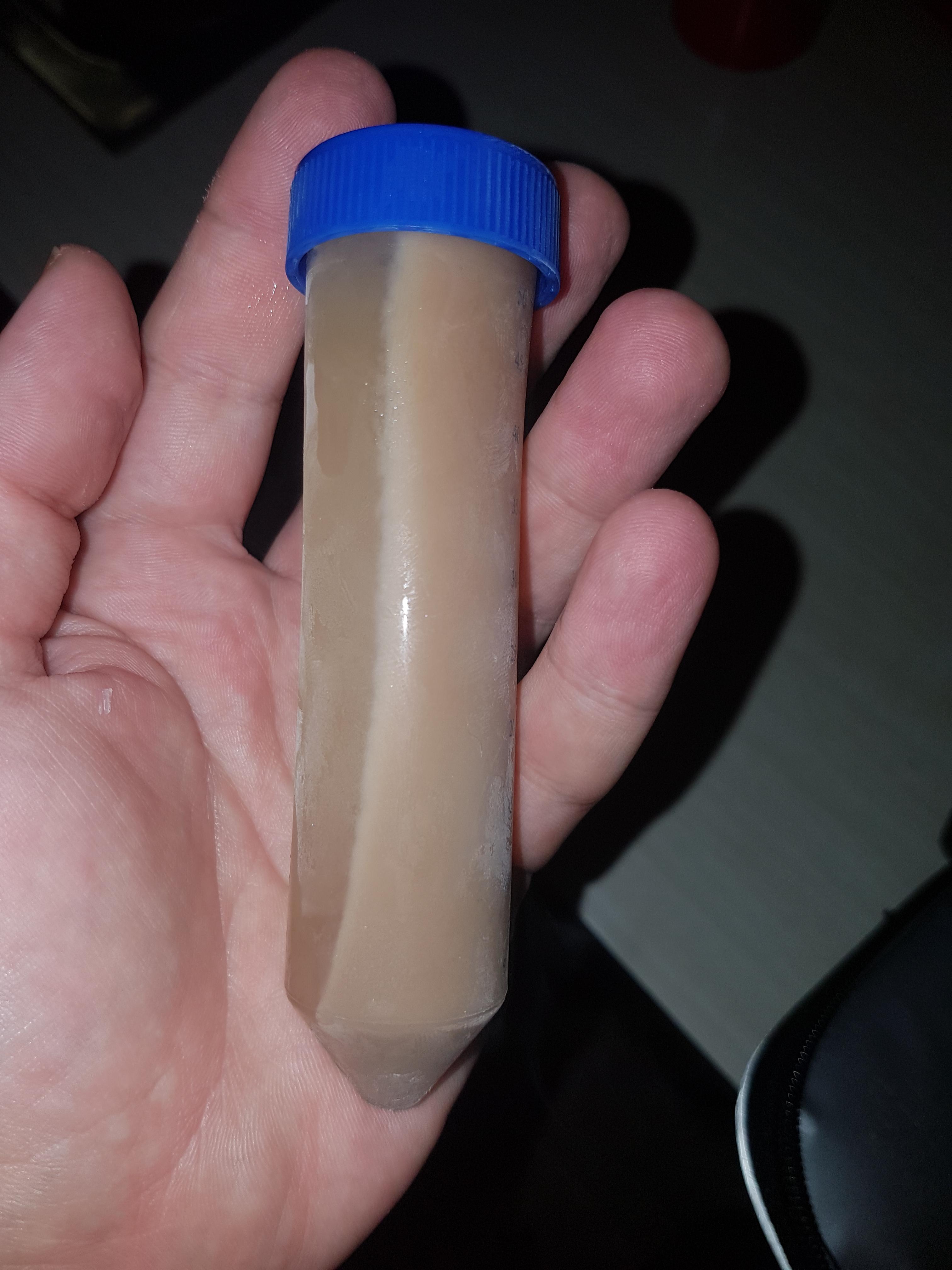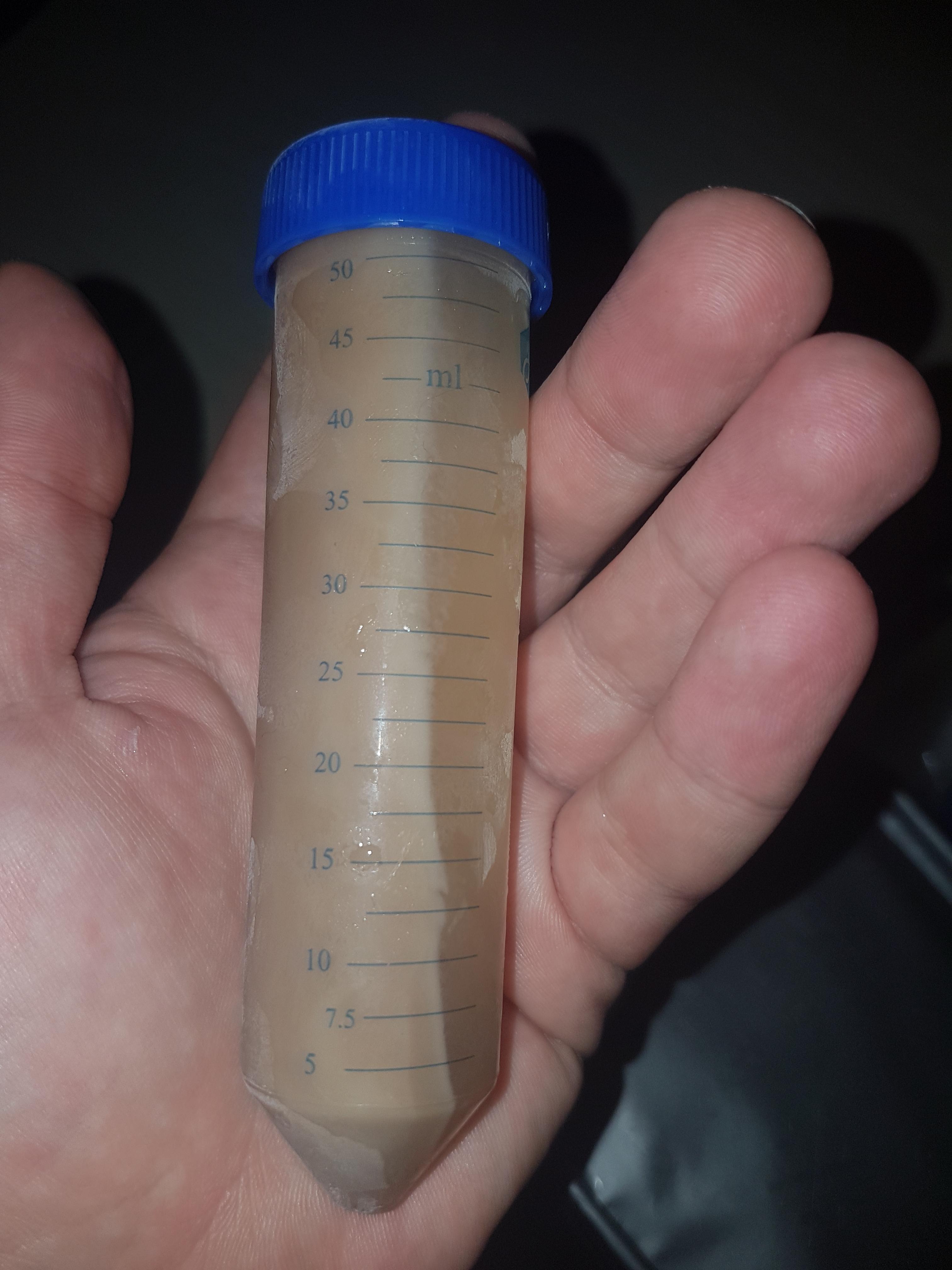You are using an out of date browser. It may not display this or other websites correctly.
You should upgrade or use an alternative browser.
You should upgrade or use an alternative browser.
Let's Freeze Some Yeast
- Thread starter Bribie G
- Start date

Help Support Australia & New Zealand Homebrewing Forum:
This site may earn a commission from merchant affiliate
links, including eBay, Amazon, and others.
Lord Raja Goomba I
Prisoner of Sobriety
Thanks for bringing this to recent threads, Yob.
I'm going to take possession of a wlp funky cider yeast. I want it to last.
I assume I use apple juice as a starter, to multiply it to get the mandatory 5 vials from one tube.
I'm going to take possession of a wlp funky cider yeast. I want it to last.
I assume I use apple juice as a starter, to multiply it to get the mandatory 5 vials from one tube.
Yob
Hop to it
Yep, use the medium that it's to actually ferment, added yeast nutrient though 
Curly79
Well-Known Member
- Joined
- 5/7/14
- Messages
- 920
- Reaction score
- 471
Maybe you should have hung onto that chest freezer mateYob said:In no way do I have a problem.... even if I am doing a major upgrade to my yeast bank
yeast vilas 1.JPG
yeast vilas 2.JPG
Lyrebird_Cycles
Well-Known Member
- Joined
- 10/7/16
- Messages
- 1,438
- Reaction score
- 777
Just a thought, this might already have been discussed in this thread but too long to back through it all - will food grade propylene glycol work as well as glycerine??
The reason I ask is the way I understand things, the yeast survive freezing temperatures because the glycerine doesn't freeze and prevents ice crystals from bursting the yeast cells.
I don't suppose it matter which one you use, both are water soluble and both can get well below freezing, I think it's -50C for PG
There are two schools of thought I've run across. One is that the glycerine keeps the yeast from freezing. The other is that the glycerine keeps the yeast from dehydrating. However, that doesn't answer the question of whether glycerine or propylene glycol. Give it a try. do yeast from the same batch, half with glycerine, half with pg. Be interesting to see how it goes.
Glycerol will work better than polypropylene glycol. The way glycerol works is not intuitive: it's apparently due to the very complete mixing of glycerol and water inhibiting the ability of either of them to link up, thus inhibiting crystal formation. Reference here.
Simple freezing point depression (eg propylene glycol) is a different mechanism: it's a colligative property, meaning that it depends on the quantity of solute present not on its identity. In the case of freezing point depression it works by diluting the solvent (water) thus reducing its equilibrium vapour pressure via Raoult's Law. This in turn reduces the temperature at which the vapour pressure of the liquid equals the vapour pressure of the crystal form (ice) which is the definition of freezing point.
Last edited:
lfc_ozzie
Well-Known Member
Hi guys,
Finally got around to freezing some yeast, only did two vials as a test for now as i used the rest of the starter in a beer. Anyway i have attached photos, do these look ok for frozen yeast? Any feedback is appreciated


Finally got around to freezing some yeast, only did two vials as a test for now as i used the rest of the starter in a beer. Anyway i have attached photos, do these look ok for frozen yeast? Any feedback is appreciated


Lord Raja Goomba I
Prisoner of Sobriety
Looks about what mine does.
It separates still, but I've had no issue with thawing and kickstarting them.
It separates still, but I've had no issue with thawing and kickstarting them.
Mardoo
Noob What Craps On A Bit
Totally normal.
AJS2154
Well-Known Member
None of us have a problem, Yob. Until we admit we have a problem all is well.In no way do I have a problem.... even if I am doing a major upgrade to my yeast bank
View attachment 97147
View attachment 97148
I have a question though. With a bank of that magnitude, I imagine the stock turns are relatively low. If that is the case some of your yeast must sit in the freezer for some time. Have you determined an optimum use by shelf (freezer) life? I have some that are about 10-12 months old at times and they seem to fire up OK.
See you, Anthony
MartinOC
Insert something suitably witty here
Glycerol will work better than polypropylene glycol. The way glycerol works is not intuitive: it's apparently due to the very complete mixing of glycerol and water inhibiting the ability of either of them to link up, thus inhibiting crystal formation. Reference here.
Simple freezing point depression (eg propylene glycol) is a different mechanism: it's a colligative property, meaning that it depends on the quantity of solute present not on its identity. In the case of freezing point depression it works by diluting the solvent (water) thus reducing its equilibrium vapour pressure via Raoult's Law. This in turn reduces the temperature at which the vapour pressure of the liquid equals the vapour pressure of the crystal form (ice) which is the definition of freezing point.
I have no doubt that you know what you're talking about, but you completely lost me here with the science.
Yob
Hop to it
None of us have a problem, Yob. Until we admit we have a problem all is well.
I have a question though. With a bank of that magnitude, I imagine the stock turns are relatively low. If that is the case some of your yeast must sit in the freezer for some time. Have you determined an optimum use by shelf (freezer) life? I have some that are about 10-12 months old at times and they seem to fire up OK.
See you, Anthony
Ive just used some of my oldest at over 3 years.. ****, you'd have to check the start of the thread where I started but I revived one of those and used it for 6 successive pitches over 3 styles...
crazy good ****
Yob
Hop to it
Posted 5/1/14
There you go.. 3 1\2 years roughly

There you go.. 3 1\2 years roughly
AJS2154
Well-Known Member
Mate that is amazing. They have to be one of the best organisms on this earth.......tough, work hard, and create a beautiful product. Hard not to admire them.
See you, Anthony.
See you, Anthony.
Gloveski
Well-Known Member
- Joined
- 13/11/16
- Messages
- 347
- Reaction score
- 149
Nullnvoid
Well-Known Member
How long before adding the yeast do people sterilise the tubes with the water glycerine mixture? Will a couple days/week be alright?
How long before adding the yeast do people sterilise the tubes with the water glycerine mixture? Will a couple days/week be alright?
I think I remember reading somewhere that up to a couple of weeks is fine.
I tend to do it a day or a few days ahead (then store in fridge till the yeast is ready).
If I end up with spares I keep them in the fridge and then re-sterilise a few days before the next time.
Nullnvoid
Well-Known Member
So I have successfully (I hope) just put my first batch in the freezer!
I have another vial in the fridge to freeze down.
Question is, do I freeze this first batch for a couple days and then try and restart one to see if it works or do I immediately jump onto the next one to be frozen?
I have another vial in the fridge to freeze down.
Question is, do I freeze this first batch for a couple days and then try and restart one to see if it works or do I immediately jump onto the next one to be frozen?
Mardoo
Noob What Craps On A Bit
You can have a quick re-start if you want, but if you followed the processes we all do (presumably  ) it will work.
) it will work.
Nullnvoid
Well-Known Member
Yeah followed the "official" unofficial accepted procedure.
Just not sure I drained enough wort off before I filled the vials. But I guess as long as there is some yeast in there, it should be right.
Just not sure I drained enough wort off before I filled the vials. But I guess as long as there is some yeast in there, it should be right.
Mardoo
Noob What Craps On A Bit
I drain my wort off until there's enough wort left to make the wort/yeast mixture about as thick as somewhere between undiluted cordial and motor oil. Whatever the case, there WILL be yeast in there. The only difference might be how many steps you need to get a big enough pitch.
Wouldn't hurt at all to start one up. It's something you get a feel for after a few batches.
Wouldn't hurt at all to start one up. It's something you get a feel for after a few batches.
Similar threads
- Replies
- 12
- Views
- 4K






